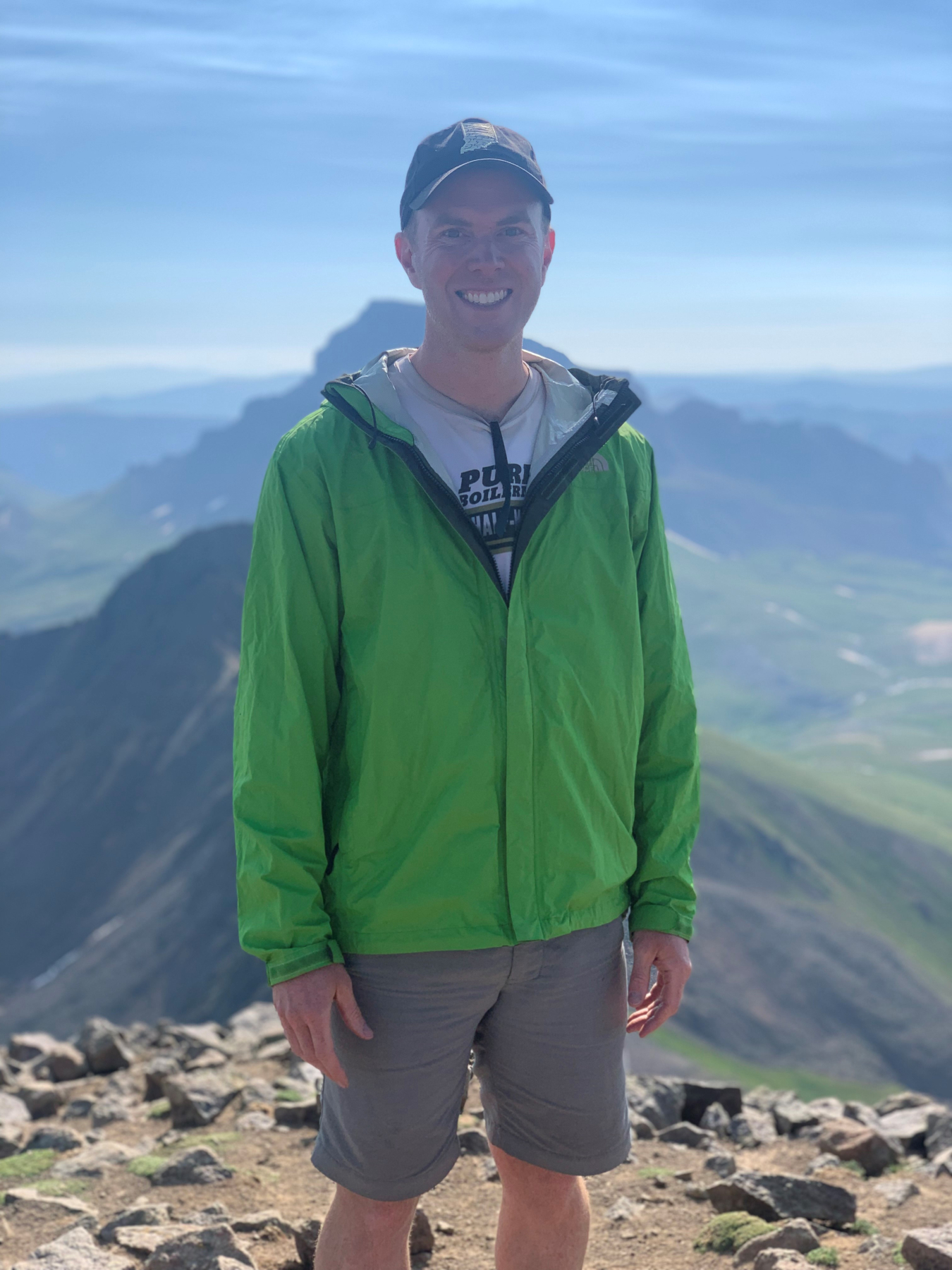Wind Energy researcher Brandon Ennis shares his career path and how others can get involved in renewable energy in the future.
Wind Energy Technologies Office
September 15, 2023What does installing a kitchen have in common with designing next-generation wind turbines?
More than you might think, according to Brandon Ennis, a wind energy researcher at the U.S. Department of Energy’s (DOE) Sandia National Laboratories (Sandia).
For the past several years, when he’s not leading Sandia’s portfolio of offshore wind energy and composite wind turbine blade projects, Ennis has been hard at work on another project—renovating his home in Albuquerque, New Mexico.
“Research and home renovation projects are both about improving something’s function and form, making things work better,” Ennis said. “It seems like there’s always more to do, and opportunity to improve.”
From floor to ceiling, Ennis tasked himself with gutting and redesigning nearly every room in his home. This included redoing electrical and plumbing systems, which provided him with a challenge that he’s loved since he was a kid: learning exactly how things work.
“Trying to renovate a home as a researcher makes things both easier and harder. I always want to find the right answer, the very best way to do something,” he said. “But that can make it a slow process. It takes a lot of careful research, and a lot of patience.”
No doubt it’s this very attention to detail that has led Ennis to make significant contributions to the field of wind energy, such as his innovative vertical-axis offshore wind turbine design, for which he filed a patent in 2020. During a conversation with Ennis, he shared how he became an engineer, his vision for a renewable energy future, and his advice for anyone interested in contributing to the renewable energy effort.

What were you like as a kid? Did you always know you wanted to be a scientist?
I gravitated toward anything that was precise as a kid, so science and math were what I excelled in. When I started my undergraduate degree at Purdue University, I wanted to go into a field that had answers. I wanted to understand the theory and physics behind phenomena and know precisely how things work. As a graduate student, I was one of only a few students studying wind energy. It was a growing industry with unanswered questions and lots of discovery and impact to be made.
You’ve come a long way since then. You’ve worked on wind energy projects at Sandia for nearly a decade now. What’s your favorite part of your job? What has kept you in the field?
I love how the challenges we work on in this field change with time. For example, the challenges we worked on 10 years ago were exciting research problems mostly focused on a single field of study, but today, the improvements are typically found from studies that include multiple disciplines. Also, as the industry evolves, it’s fun to be able to reassess if the assumptions that we made about the best system, materials, and design are still valid moving forward; as we move into new constraints and new applications, there's a lot of opportunity for creativity and innovation.
Do you come across a lot of misconceptions about wind energy? How do you address them?
One fun thing about working in wind energy research is that it's a very approachable subject. It's something that my family members, friends, and people I meet on airplanes all have some concept of. I like to approach misconceptions by helping people understand that there is no perfect form of energy generation. There is always some level of environmental impact and improvements to be made. The most common discussions or questions that people have usually take wind energy under a microscope and ignore the bigger picture of the benefits. But overall, wind energy has become a very cost-effective system with a mature industry providing broad benefits to the nation.
What is your ideal vision of a renewable energy future?
I think the ideal renewable energy scenario would be very collaborative. Researchers, industry members, and community stakeholders would work together rather than competing against one another to find the best solution for the nation. We would work to find integrated solutions across the full set of renewable energy technologies. And we could look across all of these technologies and have the context and knowledge to identify the solution that works best for everyone.
And finally, what advice do you have for someone interested in pursuing a career in renewable energy?
The renewable energy industry requires every set of expertise, not just engineering or science. There are things like communications, community engagement, and so much more that need to be done, providing many opportunities to contribute to this field. I've benefited a lot from interacting with others and learning from their experiences, so I would encourage anyone interested in a career in renewable energy to have these types of conversations with experts currently working in renewable energy as much as possible.
Learn about DOE’s Wind Energy Technologies Office and sign up to receive the Catch the Wind newsletter to read more researcher profiles like this one.

